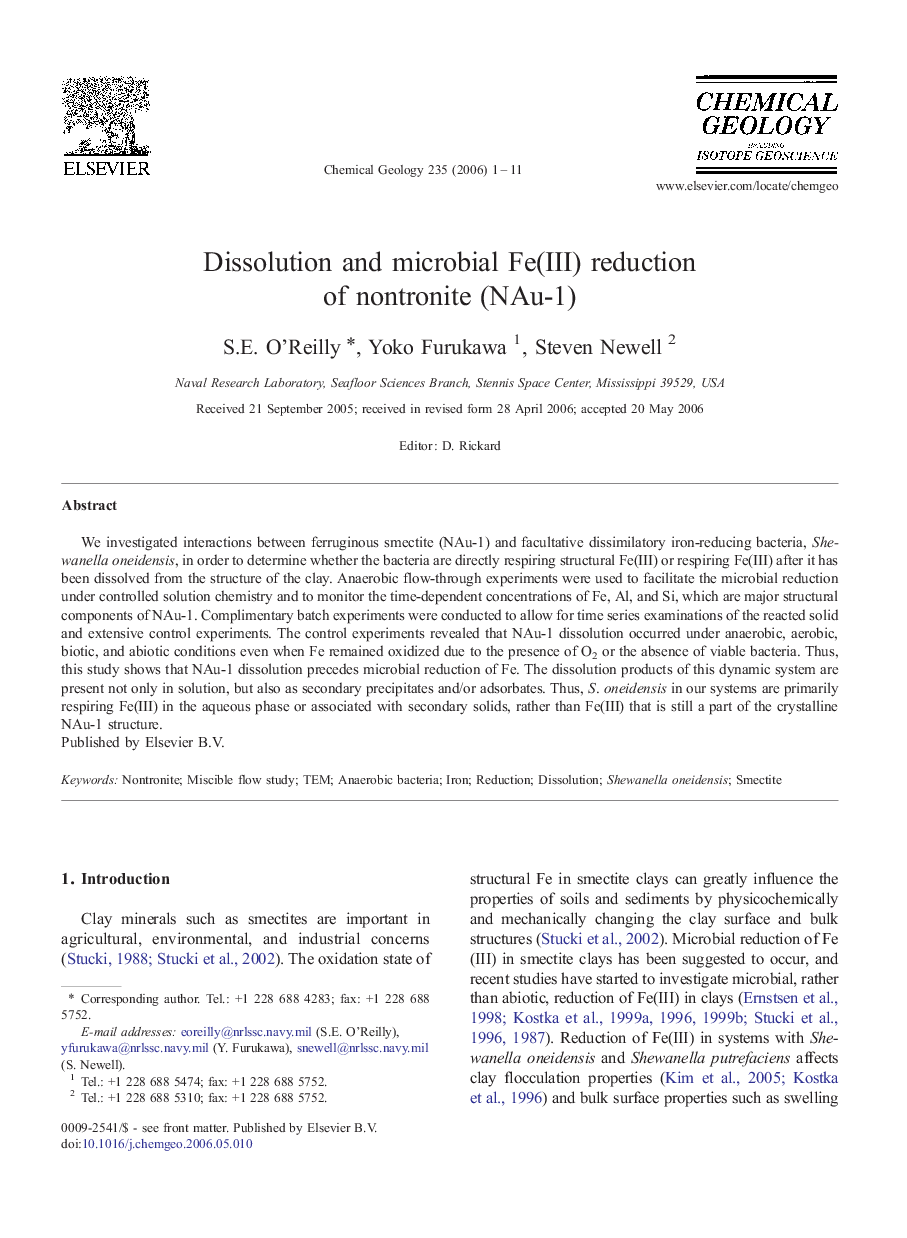| Article ID | Journal | Published Year | Pages | File Type |
|---|---|---|---|---|
| 4701327 | Chemical Geology | 2006 | 11 Pages |
Abstract
We investigated interactions between ferruginous smectite (NAu-1) and facultative dissimilatory iron-reducing bacteria, Shewanella oneidensis, in order to determine whether the bacteria are directly respiring structural Fe(III) or respiring Fe(III) after it has been dissolved from the structure of the clay. Anaerobic flow-through experiments were used to facilitate the microbial reduction under controlled solution chemistry and to monitor the time-dependent concentrations of Fe, Al, and Si, which are major structural components of NAu-1. Complimentary batch experiments were conducted to allow for time series examinations of the reacted solid and extensive control experiments. The control experiments revealed that NAu-1 dissolution occurred under anaerobic, aerobic, biotic, and abiotic conditions even when Fe remained oxidized due to the presence of O2 or the absence of viable bacteria. Thus, this study shows that NAu-1 dissolution precedes microbial reduction of Fe. The dissolution products of this dynamic system are present not only in solution, but also as secondary precipitates and/or adsorbates. Thus, S. oneidensis in our systems are primarily respiring Fe(III) in the aqueous phase or associated with secondary solids, rather than Fe(III) that is still a part of the crystalline NAu-1 structure.
Related Topics
Physical Sciences and Engineering
Earth and Planetary Sciences
Geochemistry and Petrology
Authors
S.E. O'Reilly, Yoko Furukawa, Steven Newell,
